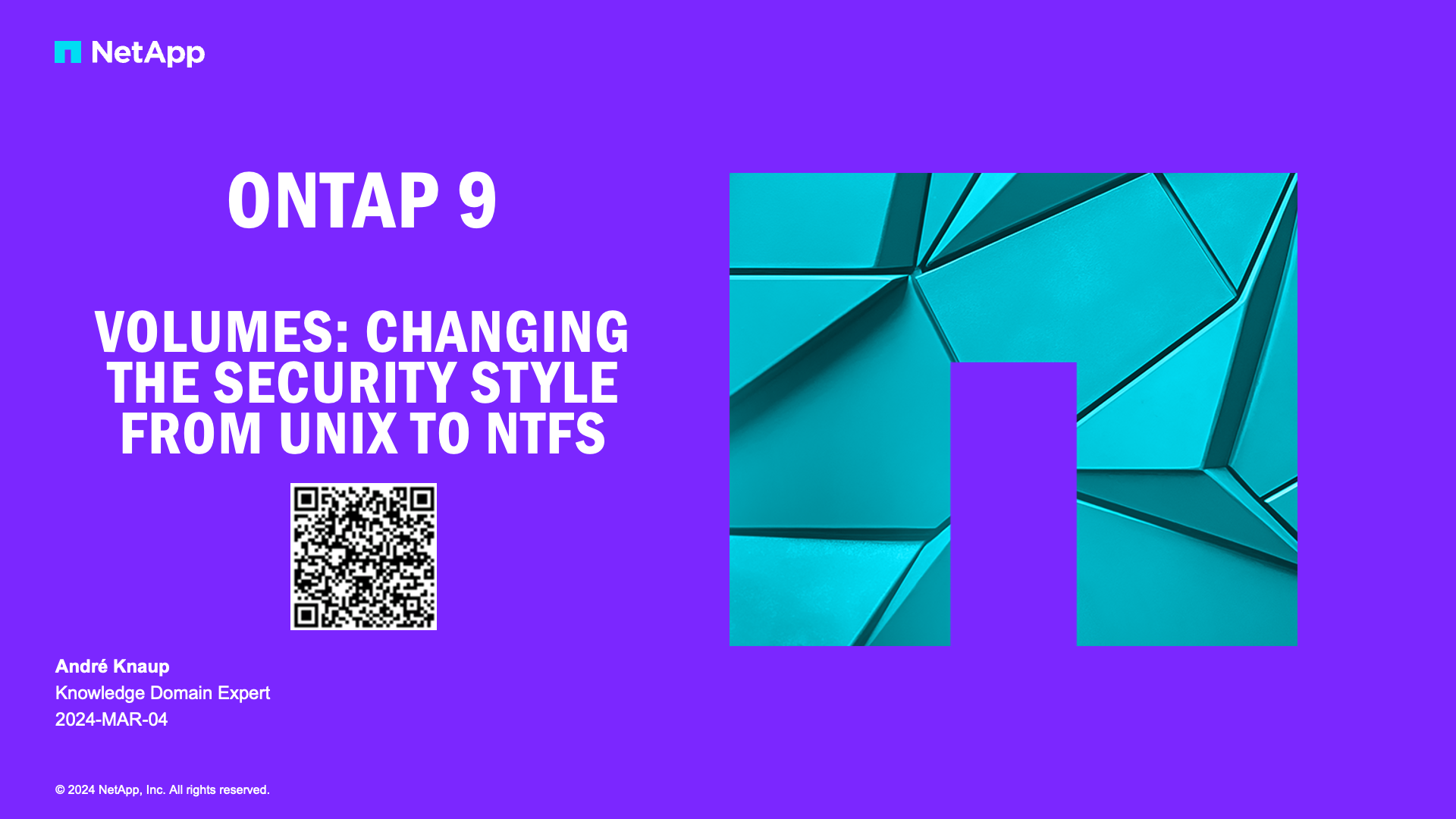Active IQ Unified Manager Discussions
- Home
- :
- Active IQ and AutoSupport
- :
- Active IQ Unified Manager Discussions
- :
- Re: Is WFA supports active/standby design ??
Active IQ Unified Manager Discussions
- Subscribe to RSS Feed
- Mark Topic as New
- Mark Topic as Read
- Float this Topic for Current User
- Bookmark
- Subscribe
- Mute
- Printer Friendly Page
- Mark as New
- Bookmark
- Subscribe
- Mute
- Subscribe to RSS Feed
- Permalink
- Report Inappropriate Content
My client has 2 different geographical data centers and asking us to implement WFA in active/standby mode , so that they can execute them from both if needed.
Does WFA supports active/standby config ?? did any one have implemented it ?
- Mark as New
- Bookmark
- Subscribe
- Mute
- Subscribe to RSS Feed
- Permalink
- Report Inappropriate Content
- Mark as New
- Bookmark
- Subscribe
- Mute
- Subscribe to RSS Feed
- Permalink
- Report Inappropriate Content
- Mark as New
- Bookmark
- Subscribe
- Mute
- Subscribe to RSS Feed
- Permalink
- Report Inappropriate Content
@arjunan wrote:
Option 1 : Backup and restore : Have two instances of the WFA server on the two geographical locations. One WFA instance as active and whenever you need to switch to other instance take a backup from Active instance and restore it on the standby instance. steps: 1. Take a Backup of the Active instance 2. Bring down the Active instance 3. Bring up the Standby Instance 4. Restore with the Backup taken on the Active instance. drawback: ------------- every-time you need to switch you need to take a backup and restore it on the standby instance and make it active. Option 2 : High-Availability : WFA supports High-Availability option in the latest release. but we support this configuration only on the same geographical location because the shared LUN between High-Availability WFA servers should be on the same location as WFA instances. Option 3: Disaster recovery solution : This is also more like a backup and restore solution, but both the instances will have the same UUID as the DR backup takes the entire system backup and restore.
A couple of questions:
1. For the active/active model (WFA in each site polling the same data sources) - would you have OCUM instances in each site as well, with each OCUM polling each cDOT cluster (assuming a manageable number of cDOT clusters)
or
2. Passive model: perform a similar backup/restore task with the OCUM server
Thanks geringer and arjunan.
- Mark as New
- Bookmark
- Subscribe
- Mute
- Subscribe to RSS Feed
- Permalink
- Report Inappropriate Content
hi cbbarkin,
1. For the active/active model (WFA in each site polling the same data sources) - would you have OCUM instances in each site as well, with each OCUM polling each cDOT cluster (assuming a manageable number of cDOT clusters)
Active\Active means if there is a failure of application\server in one location will be taken over by another site without downtime, what we support in WFA high-availability is Active\Passive option. The one node will be active and whenever the Active node goes down the passive will become Active.
whatever you have mentioned are two differnt instances,
- when one WFA at one site goes down while executing workflows that will not be taken care by another site as there is no link between them.
- This may help in monitoring but not for WFA application.
2. Passive model: perform a similar backup/restore task with the OCUM server
- I think OCUM supports backup\restore, i am not sure if they support comprehensive backup/restore
thanks,
Prabu
2. Passive model: perform a similar backup/restore task with the OCUM server
- are you talking about OCUM instance ? The backup restore is supported in OCUM but i am not sure if they support Comprehensive restore\backup.
- Mark as New
- Bookmark
- Subscribe
- Mute
- Subscribe to RSS Feed
- Permalink
- Report Inappropriate Content
HI arjunan,
Thanks for the response - I should have been clearer - I realize that neither OCUM nor WFA support what anyone would consider active/active. I should have described it as independent instances of WFA/OCUM/OPM at each site.
In any case for my client we've decided on a single VM with WFA/OCUM/OPM, that will be replicated to their three sites either with SMVI/SnapMirror or vSpere replication.


